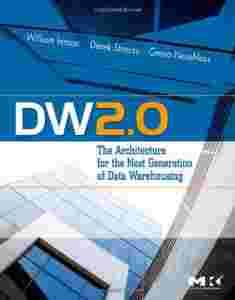|
 |
Autor: William H. Inmon , Derek Strauss , Genia Neushloss
Wydawnictwo: Morgan Kaufmann
Data wydania: 14 Aug 2008
Ilość stron: 400
Wymiary książki: 2.4 x 18.8 x 23 cm
Rodzaj okładki: Paperback
ISBN-13: 978-[zasłonięte][zasłonięte]37431
978-[zasłonięte][zasłonięte]37431A
Data Warehousing has been around for 20 years and has become part of the information technology infrastructure. Data warehousing originally grew in response to the corporate need for information - not data - and it supplies integrated, granular, and historical data to the corporation. There are many kinds of data warehouses, in large part due to evolution and different paths of software and hardware vendors. But DW 2.0, defined by this author in many talks, articles, and his b-eye-network newsletter that reaches 65,000 professionals monthly, is the well-identified and defined next generation data warehouse. The book carries that theme and describes the future of data warehousing that is technologically possible now, at both an architectural level and technology level. The perspective of the book is from the top down: looking at the overall architecture and then delving into the issues underlying the components. The benefit of this for people who are building or using a data warehouse can see what lies ahead, and can determine: what new technology to buy, how to plan extensions to the data warehouse, what can be salvaged from the current system, and how to justify the expense - at the most practical level. All of this gives the experienced data warehouse professional everything and exactly what is needed in order to implement the new generation DW 2.0. This is the first book on the new generation of data warehouse architecture, DW 2.0. It is written by the 'father of the data warehouse', Bill Inmon, a columnist and newsletter editor of "The Bill Inmon Channel on the Business Intelligence Network". It provides long overdue comprehensive coverage of the implementation of technology and tools that enable the new generation of the DW: metadata, temporal data, ETL, unstructured data, and data quality control.
|
|

